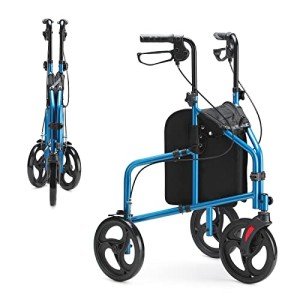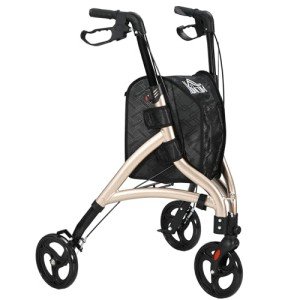Rollators are mobility aids developed to improve the independence and safety of people with mobility difficulties. Unlike standard walkers, rollators are equipped with wheels, a seat, and often a storage pouch, permitting users to move with greater ease and comfort. This article provides a thorough guide on how to use a rollator effectively and safely, making sure a smoother and more satisfying walking experience.
A rollator is a wheeled walking aid. It generally has:

There are various types of rollators, created to satisfy the needs of various users:
| Type | Description | Best for |
|---|---|---|
| 3-Wheel Rollator | Lighter and more compact, perfect for indoor use | Navigating tight areas |
| 4-Wheel Rollator | Deals stability and a bigger seat, ideal for outdoor use | Longer walks and much heavier use |
| Durable Rollator | Developed to support more weight with additional robust features | Users needing extra assistance |
| Pediatric Rollator | Smaller sized in size, changed for kids | Children with mobility constraints |
Utilizing a rollator correctly is important to guarantee safety and maximize the Benefits Of Rollator Walker it offers. Here's a step-by-step guide:
Before using the rollator, it is necessary to change the handlebars to the appropriate height.
Understanding the components of the rollator will help improve its functionality.
Constantly use the brakes efficiently to boost safety:

Turning and navigating can be challenging, so here are vital tips:
Taking breaks is essential. Here are tips for resting:
To ensure the rollator remains practical and safe:
Users may face numerous common problems when utilizing rollators. Here are some general FAQs:
Q1: Can I use a rollator outdoors?A: Yes, many
rollators are designed for both indoor and outdoor use. However, ensure it has the appropriate wheel size and tread for outdoor surfaces. Q2: What are the weight limitations on rollators?A: Weight restricts
typically vary by design, however sturdy rollators can typically accommodate users weighing around 300 to 500 pounds. Q3: Are rollators adjustable?A: Yes, a lot of rollators include adjustable deal with heights to accommodate users of numerous heights
. Q4: How do I transport a rollator?A: Many rollators canbe folded for practical transportation in a vehicle. Constantly inspect the user manual for specific folding guidelines. Q5: Can I use a rollator while recuperating from surgery?A: Yes, numerous people use rollators throughout healing to restore strength and balance, but guarantee you follow your doctor's suggestions.
Understanding how to use a rollator properly can significantly enhance mobility and reduce the risk of falls. Whether you are brand-new to using mobility aids or seeking to fine-tune your strategy, following the guidelines discussed in this post is vital. With practice, a rollator can boost self-reliance while guaranteeing safety, hence permitting users to take pleasure in a more active lifestyle.
No Data Found!

